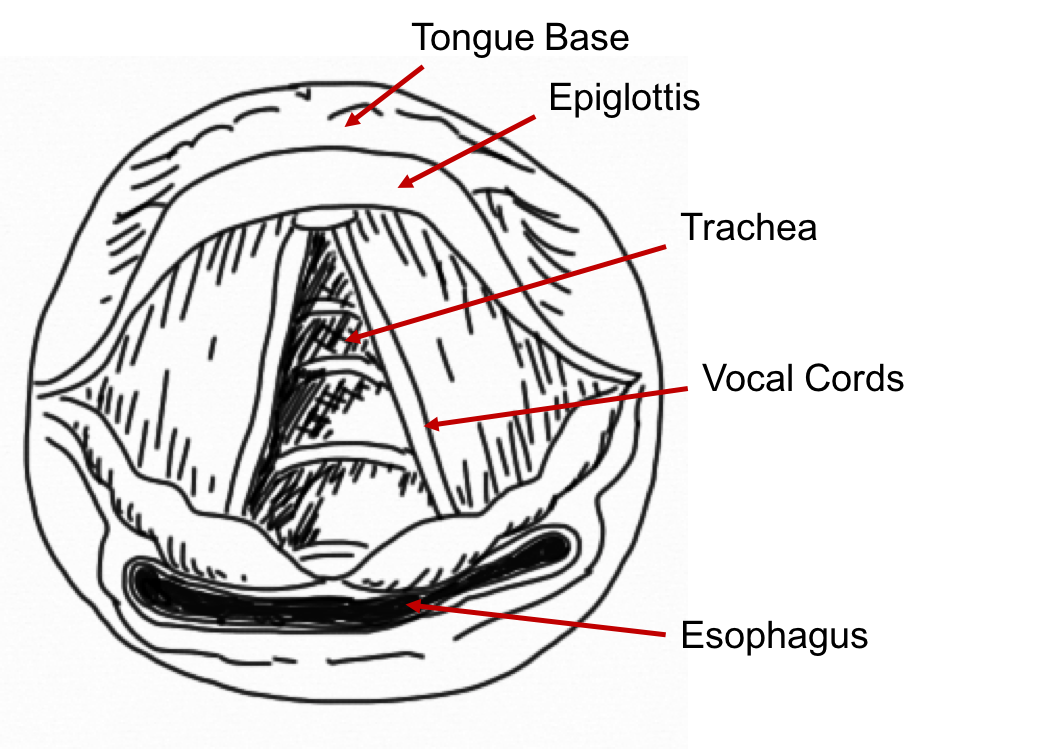The Upper Airway
The nose, mouth, throat (pharynx), voice box (larynx) and esophagus are all connected. We breathe and feed through the same passageway and our bodies are challenged with coordinating respiration, speaking and swallowing through the same anatomic passageways.
The Nose: Humans typically breathe through their noses. The nose has a remarkable ability to heat, humidify and filter the air we breathe. Without the nose, our airways can become dry (which can incite inflammation) and we are required to expend calories in order to warm the air as cold air can cause our airway muscle to tighten up (such as occurs in asthmatics). The nose also filters out large particles such as dust or pollen that can eventually contribute to inflammation in the lungs.
How to upset one’s parents: When told to finish one’s vegetables, say “No!” and thrust tongue outwards as demonstrated.
The mouth serves multiple purposes, including chewing and processing food, serves as an alternative passage for air and helps us to speak (phonate). The mouth also contains the tongue which helps babies to coordinate a suck, swallow and breathe and in older children the tongue helps to initiate the pharyngeal phase of swallow (and also serves as a means to upset parents when utilized to express defiance, see inset photo). As a food bolus is passed to the back of the throat, the epiglottis folds down on top of the vocal cords as the larynx rises to meet it. The food bolus passes over the epiglottis and into the esophagus, avoiding contact with the larynx or vocal cords.
The vocal cords serve as the gatekeepers to the lungs. They move together (abduct) and separate (adduct) depending upon what is required. Normally the open when taking a deep breathe and close at various times and frequencies when speaking. As we swallow, they close to protect the airway from any food or liquid that may sneak around the epiglottis and enter the laryngeal vestibule (the top portion of the larynx where the vocal cords sit). If food or liquid reaches the laryngeal vestibule or the vocal cords, a cough is triggered as a last resort to prevent aspiration (food or liquid entering the airways).
Swallowing
There are three stages in the process of swallowing. The first phase is the oral phase where chewing or moving the food bolus around the mouth occurs. The second phase is the pharyngeal phase where breathing stops, the voice box lifts up and the epiglottis closes on top of the voice box. Also during this phase the esophagus opens up and receives the food bolus. The third phase is the esophageal phase where food passes down the esophagus into the stomach. Any disruption in this process can lead to food or liquid touching the vocal cords or passing down into the lower airway, a process called aspiration. For more details on the process of swallowing and related complications, click here.





